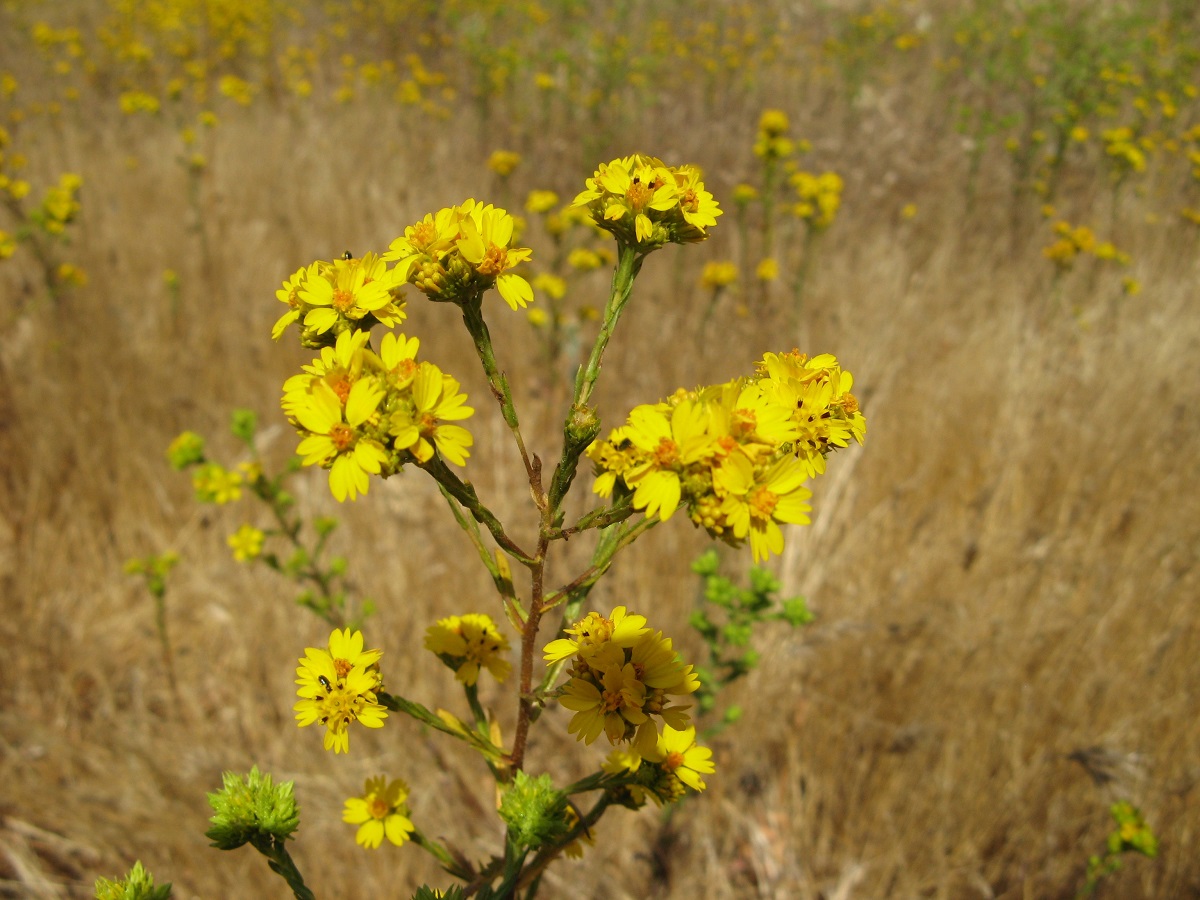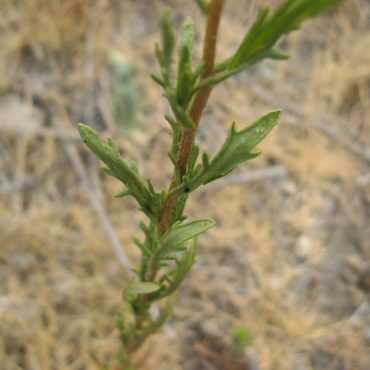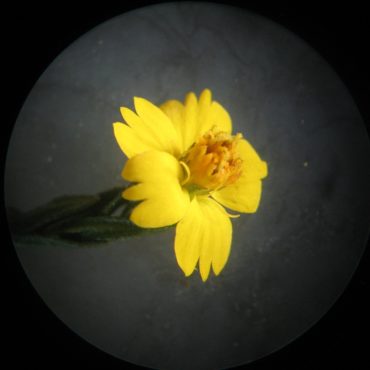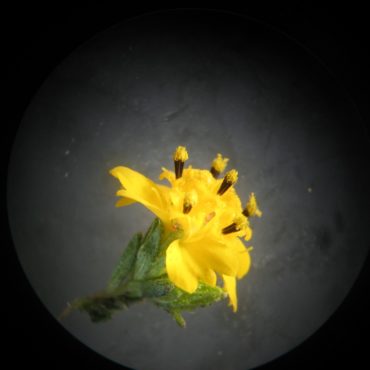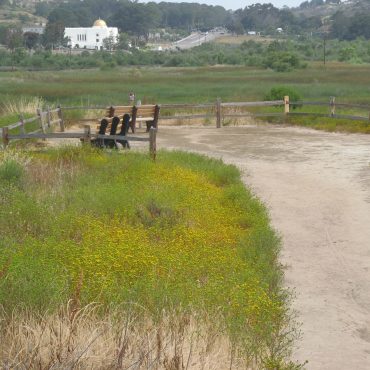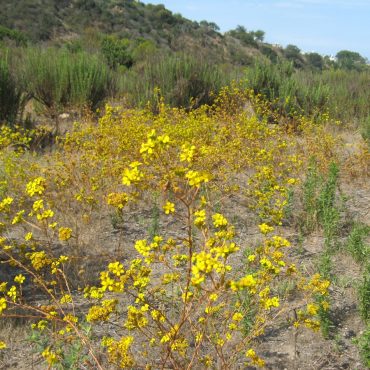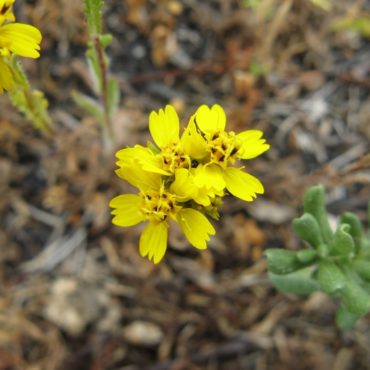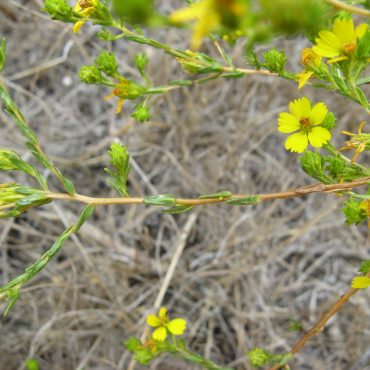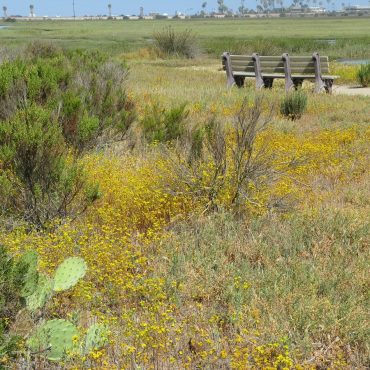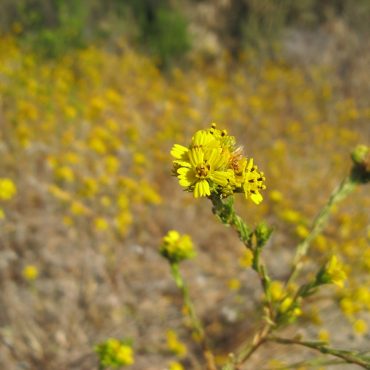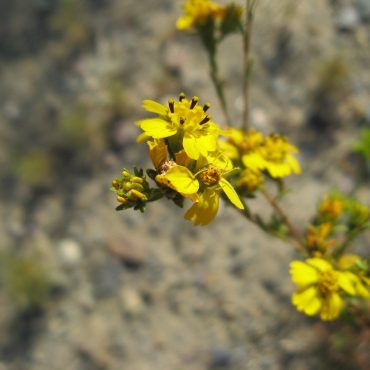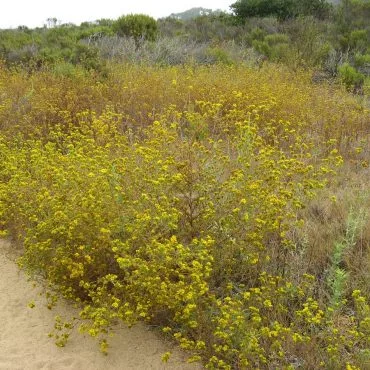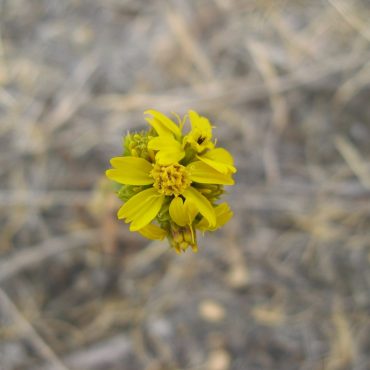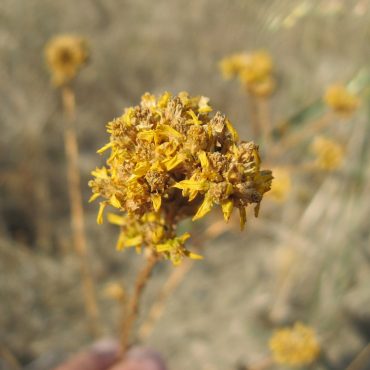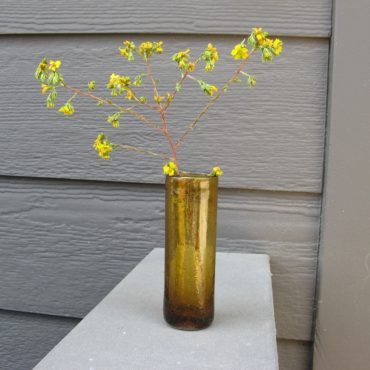Description
2,4,43,59
Tarweed is an upright, branching annual plant, usually less than 3 ft (1 m) in height. In early spring, a basal rosette of leaves develops from a taproot; basal leaves may be up to 6 inches (15 cm) long. Later, upright reddish stems arise, branching mostly above the midpoint. Basal leaves generally wither before flowering begins, and the cauline leaves drop soon after. The small narrow cauline leaves are irregularly and coarsely toothed with the margins rolled under. Stems and leaves are more or less covered with white hairs. Plant are glandular, producing a sticky resin with an aroma that varies from unpleasantly pungent to pleasantly sweet seemingly dependent on the age of the plant and strength of its odor.
Flower heads are composite, like a daisy, with two types of florets clustered together on a common base. The five peripheral ray florets each have one, broad, three-lobed petal flaring outward. Several (usually six) symmetrical, urn-shaped disk florets form the “eye” of the flower head. Ray florets are female with single pistles which have two-branched styles. Disk florets are bisexual, often with dysfunctional pistils. Five dark anthers are united into a column around the style; when mature, these form five distinctive dots in the eye of the flower head. Small clusters of yellow flower heads are born at the ends of branches. Together with the long stems and sparse foliage, the small terminal clusters of blooms give the plant an open, airy look. The major bloom time is April – September.1
After fertilization, petals wither but remain attached. Seeds are tiny, lacking a developed pappus to parachute them through the air, away from the parent plants. They are presumably dependent on gravity or on birds and small animals for dispersion.

